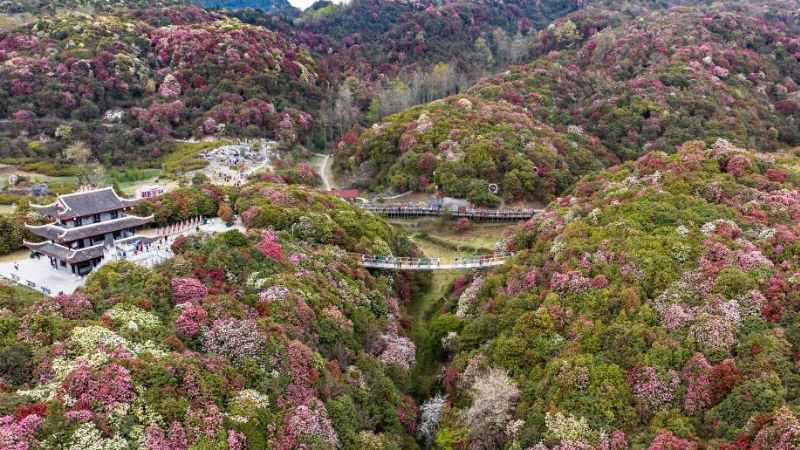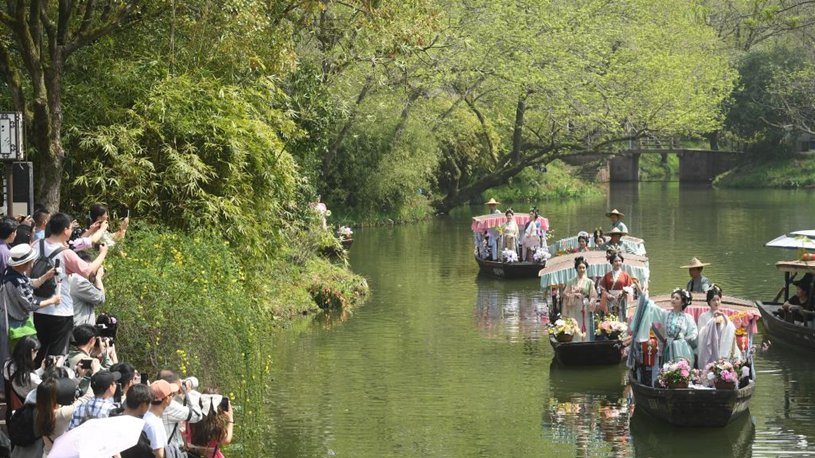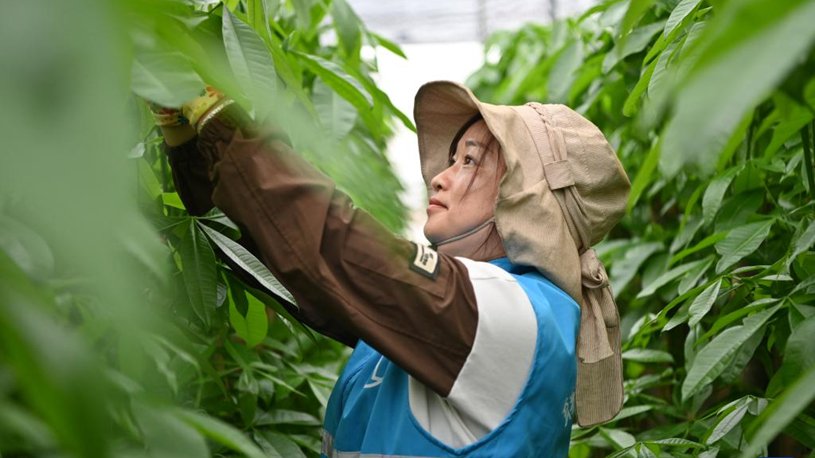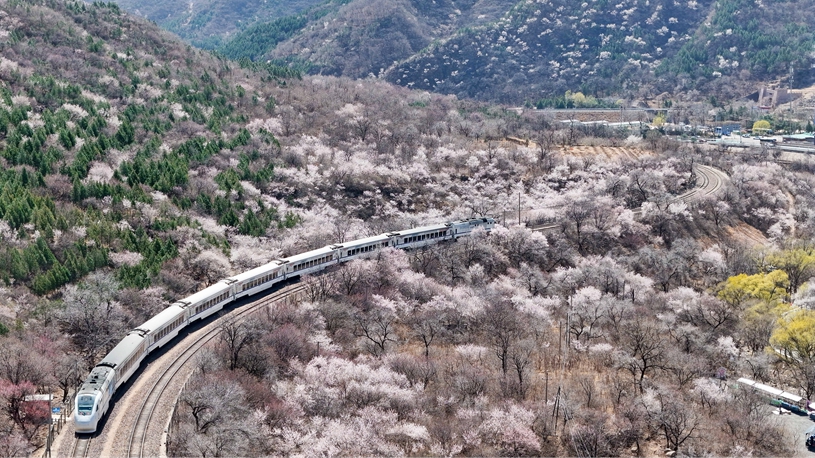*Monday will coincide with the 10th anniversary of the logging ban of the Khingan Mountains forests, home to northern China's largest natural forest barrier.
*Following the ban on commercial logging, tens of thousands of workers in state-owned forest companies put down their axes and took up plantations or became forest rangers.
*In addition to tourism, state-owned forest companies have vigorously developed "underforest industries" to capitalize on the abundant natural resources.
HARBIN, March 31 (Xinhua) -- While spring afforestation is in full swing across much of China in March, a nursery garden in the Khingan Mountains, home to northern China's largest natural forest barrier, remains quiet.
"It's not time yet. Usually, planting begins here at full steam when the snow starts melting around mid-April," said Yan Chaofu, director of the Pinglin nursery garden owned by Longjiang Forest Industry Group Co., Ltd. (Longjiang Forest), located in northeast China's Heilongjiang Province.
Korean pine or red pine seedlings are cultivated in the garden for four to five years until they reach about half a meter in height before being transplanted into the mountain, Yan said.
China is home to about 60 percent of the world's red pine trees, with more than half of them scattered in the Lesser Khingan Mountains.
Known as the "king in the forest," red pine plays an important role in the ecosystem, helping with carbon sequestration, climate regulation and water conservation.
The red pine resource once supported a thriving lumbering industry. Longjiang Forest, along with two other major state-owned forest industry companies in the Khingan Mountains, was established to supply timber materials for China's economic development.
Before China initiated a logging ban on the Khingan Mountains forests in 2014, the forest base had produced more than 600 million cubic meters of wood.
Following the complete ban on commercial logging, tens of thousands of workers in state-owned forest companies put down their axes and took up plantations or became forest rangers.
Monday will coincide with the 10th anniversary of the logging ban. Thanks to a decade of constant afforestation efforts, Longjiang Forest saw its forest area increase by 65,800 hectares to reach 5.58 million hectares by the end of 2023, with both the forest density rate and the total forest stock witnessing growth.
Currently, Longjiang Forest has 39 designated nature reserves, covering an area of 2.24 million hectares.
Greater Khingan Forest Industry Group, another major forestry company in the area, has also witnessed a dramatic improvement in ecological conditions after the logging ban.
Sun Lisen, 53, a ranger with the company since 2002, said that he spent almost his entire career monitoring the forest area from a watchtower on the mountain.
As the son of a logger, Sun recalls childhood memories of his father bringing home hunting prey after cutting down trees on the forest farm.
"In the past, we regarded wild animals as food, but now we see ourselves as their guardians, helping them survive," he said, describing the significant shift in people's attitudes toward nature.
The sound forest environment has drawn increasing numbers of tourists. Almost every household of forest workers in the mountain area now runs bed-and-breakfast (B&B) businesses or is involved in tourism-related work like tour guides or selling forest specialties.
Pan Deguo worked as a tractor driver, transporting timber, just like his father did on the Weixing Forest Farm owned by Longjiang Forest. His wife is also a forest worker. He said that in 2012, a man with a camera visited his house and requested food and lodging.
"We had no idea what a B&B was. After spending the night at my house, the man left me 200 yuan (about 28 U.S. dollars)," Pan said, adding that as more visitors started pouring in, local forest workers realized the wealth that the natural beauty of the forest could bring them.
After logging ceased in 2014, Pan and his wife fully immersed themselves in running a B&B business, constructing lodging facilities. Other households here have also established such business ventures.
Instead of being known as the Weixing Forest Farm, the place is now better known as "Snow Village" for its tourism resources.
"Our menus are handwritten, offering all farm dishes. Winter is our busiest time," said Pan.
DIVERSIFIED BUSINESS STRATEGY
In addition to tourism, state-owned forest companies have vigorously developed "underforest industries" to capitalize on the abundant natural resources, cultivating fungus, Chinese medicinal herbs, and cash crops such as berries.
According to Ji Fengjie, general manager of a forest food division of Longjiang Forest, the company boasts 106 fruit and vegetable greenhouses, producing farm products highly sought after on the market.
Before the logging ban, forest companies had meager profits, but a decade later, diversified economic development brought in additional sources of income, he said.
According to Zhang Guanwu, chairman of Longjiang Forest, the company's total operating revenue in 2023 reached 11.05 billion yuan, an increase of 10.02 percent year on year, with the total profit doubling to 116 million yuan.
Greater Khingan Forest Industry Group has also expanded its business into underforest resources, tourism, healthcare, and automobile testing.
IMPROVING WILDLIFE HABITAT
In addition to sustainable economic development, ecological restoration efforts have borne fruit. The wetland area administered by Longjiang Forest has reached 341,200 hectares, encompassing the internationally significant Dongfanghong Wetland National Nature Reserve.
The area managed by the forestry company is home to more than 500 wild animal species and over 2,200 varieties of wild plants.
In 2021, animal conservationists released a captive-bred Siberian tiger into the forest area to help restore the tiger population in the wild.
Siberian tigers, also known as Amur or Manchurian tigers, mainly inhabit eastern Russia, northeast China, and the northern part of the Korean Peninsula, and are on China's first-class protection list.
According to Wang Daohui, a ranger with Longjiang Forest, five adult Siberian tigers have been spotted in the forest area in recent years.
The forestry company has observed that the range of activities of wild Siberian tigers and leopards has significantly expanded.
"By building ecological corridors and biodiversity protection networks, we have effectively safeguarded rare and endangered wildlife resources requiring urgent protection," said Cui Yan, director of the Lesser Khingan Mountain wildlife rescue and breeding research center in Heilongjiang.
He added that with the gradual improvement of the ecological environment, the population of wild animals has exhibited a momentum of recovery. ■
(Video reporters: Wang He, He Shan, Wu You; Video editors: Zhang Qilu, Wei Yin, Wang Houyuan)










